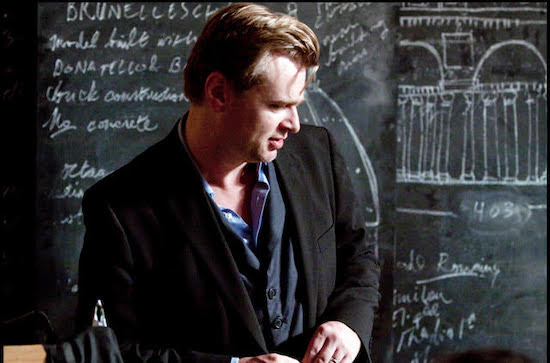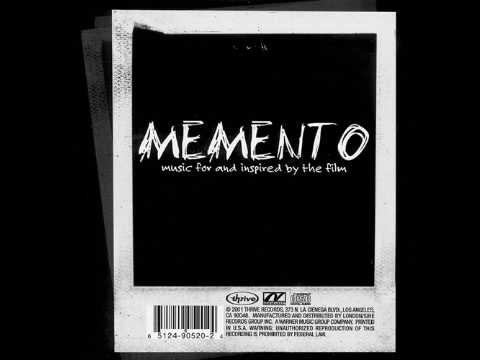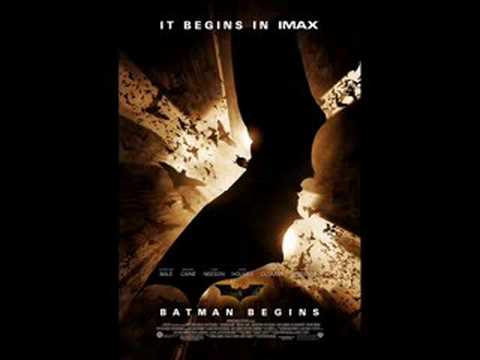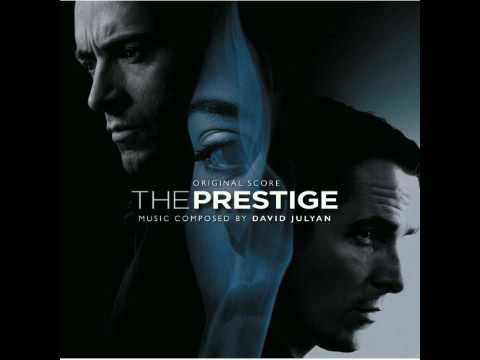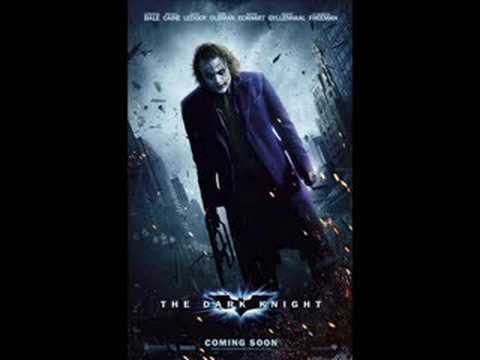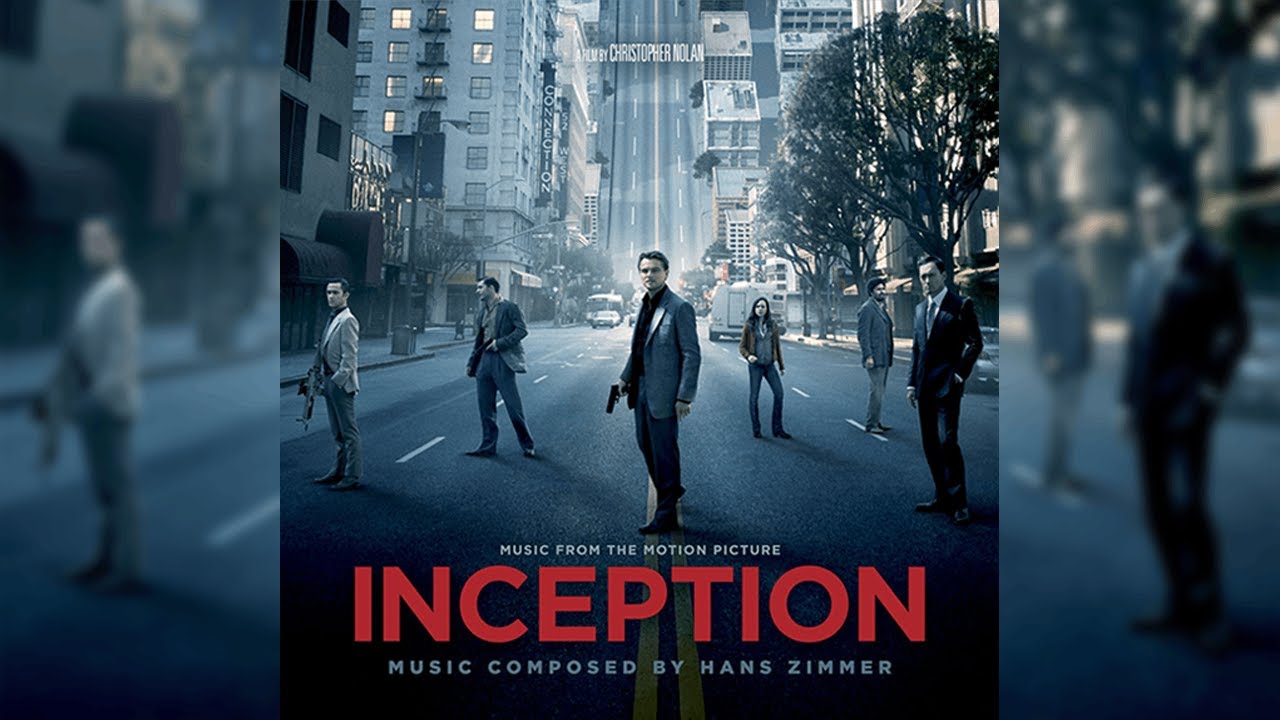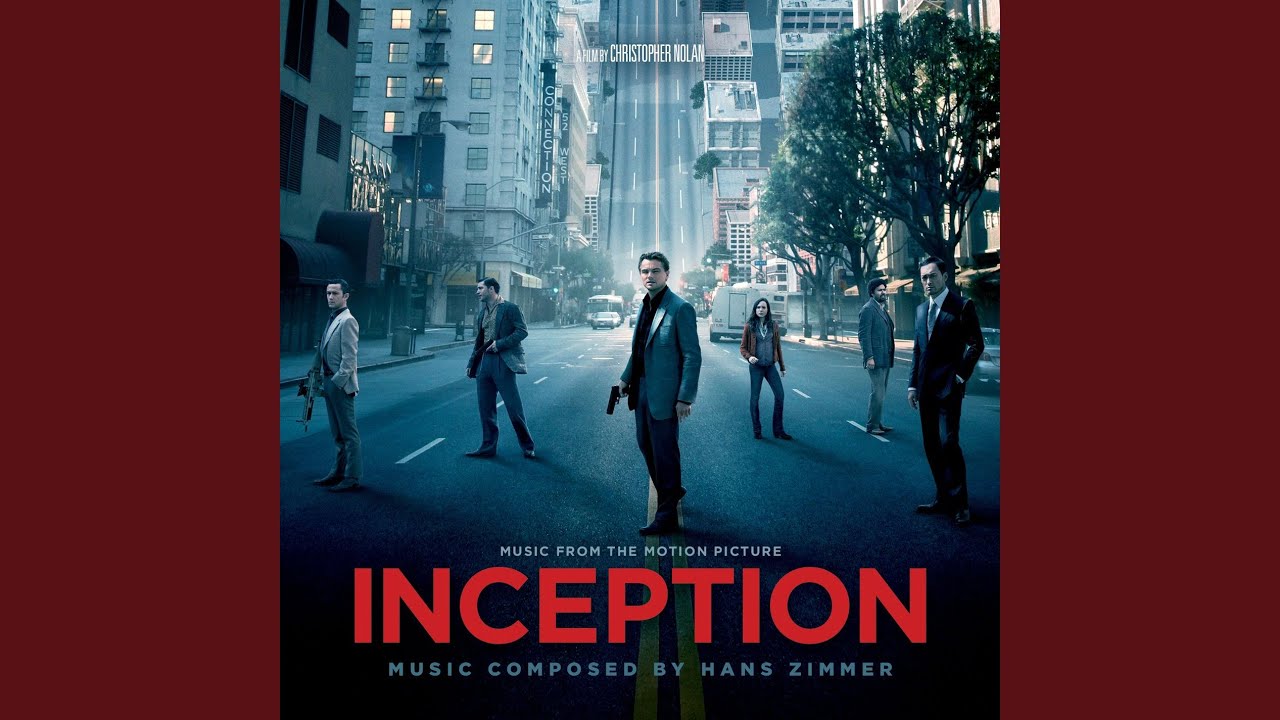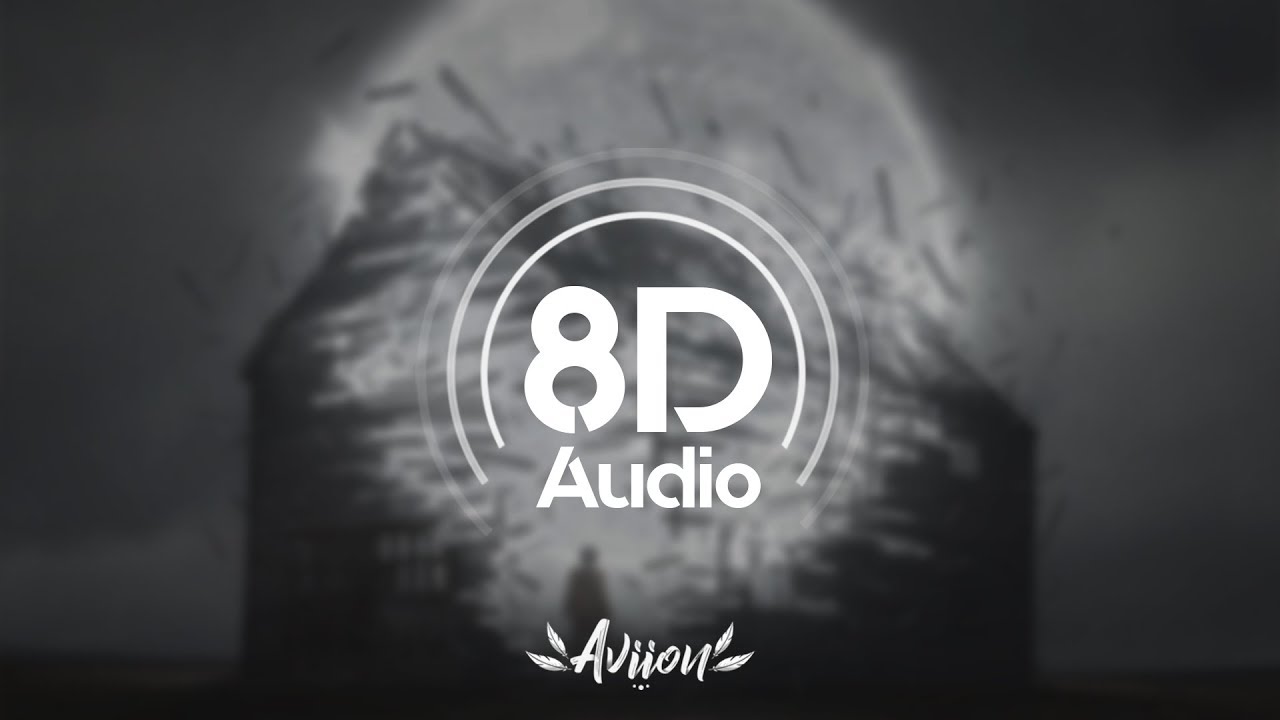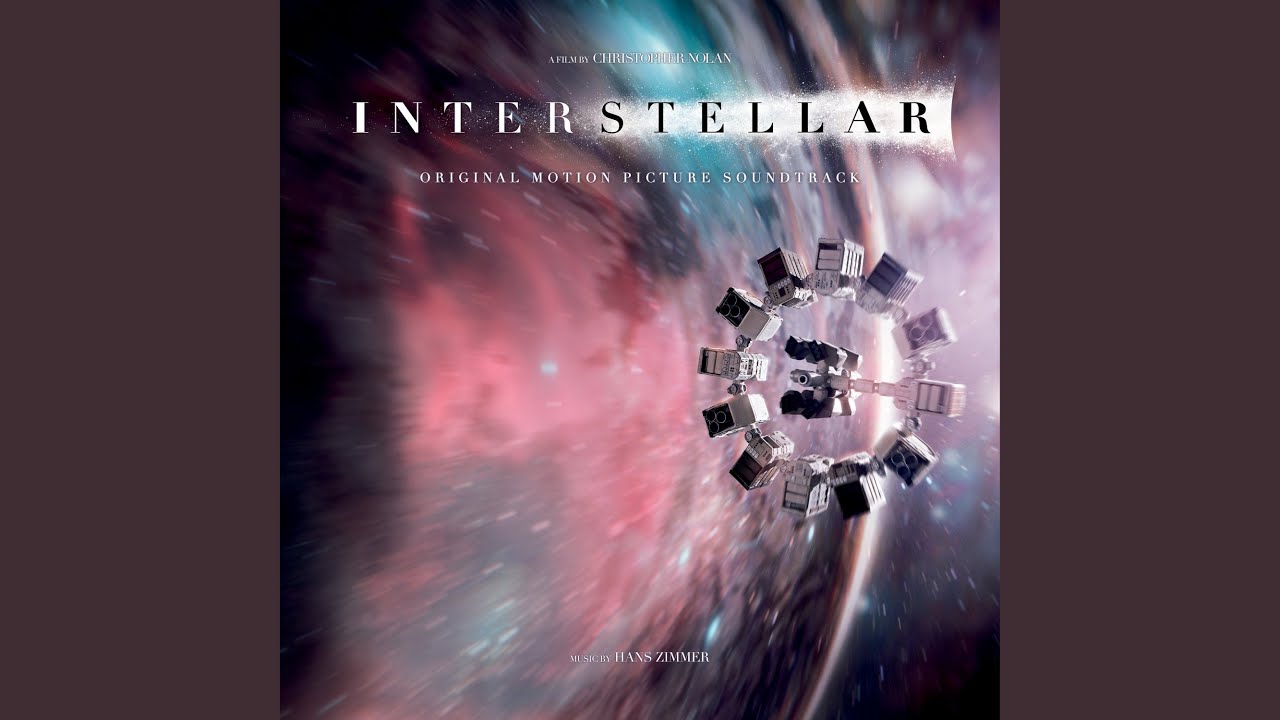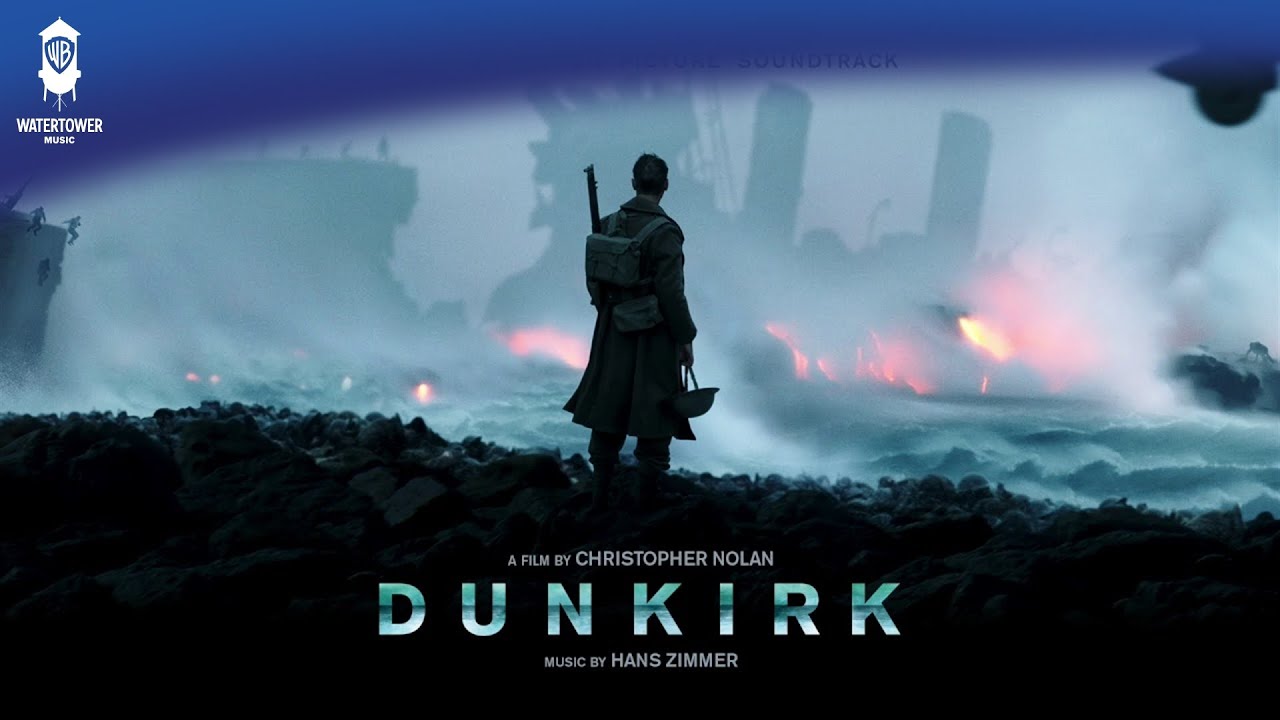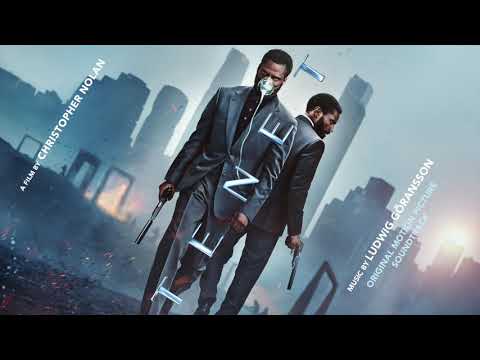In the corner of Christopher Nolan’s library, a Frank Lloyd Wright-inspired duplex that sits in his back garden, next to the stack of records, propped against one of the windows, are two cellos, and two accompanying music stands. He recently picked up the instrument to relax when he’s not making movies. As Nolan has got older and his films larger, he has, like Hitchcock, grown more intrigued by the abstract potential of composition and music to pattern and structure his narratives.
“People have asked if I would ever make a musical and I’m like, ‘They’re all musicals,” Nolan told me during one of the interviews for my book The Nolan Variations. “I read a quote from Angelo Badalamenti many years ago in which he said David Lynch used to say to him things like ‘Play big chunks of plastic.’ The funny thing is when I first read the quote I remember thinking, ‘Wow, what a crazy thing’ but now I make complete sense of it. Good film music does something you can’t articulate in other ways. If you would, you could but you can’t… There’s a part of me that doesn’t really understand why I’ve gone that way, and to that degree, but I have and it works for me. It helps me express a bit of myself, and it’s the only way I can express it.”
To mark the publication of The Nolan Variations, then, here are my ten favorite musical cues from Nolan’s films, with commentary from the director.
Memento (2000) ‘Opening Titles / Polaroid Fades’
As soon as the script for Memento was finished, Nolan commissioned music from UCL alumni David Julyan, the music evolving alongside the film itself. “David and I had very much grown up together and we had done Following as well as some shorts,” says Nolan, who FEDEXed finished scenes in the mail to London, receiving CDs of musical cues in return. In the film’s memorable opening sequence, a murder is rewound – blood unspattering, bullet flying backwards into a gun – while Julyan overlays a dirge of mournful synthesizers with a wash of ambient electronica, like a sleepless computer perturbed by bad dreams: Nine Inch Nails meets John Barry. “I did have a sound in my head,” says Nolan. “How I articulated that to him I don’t remember specifically. I knew it was always going to be an ambient, synthesized score, not an orchestral score. ‘Okay, I want that….’ The thing that synthesizer music does, is you can create voices and sounds that don’t have cultural associations, which makes them perfect for film scoring… There’s something missing from most good soundtracks and that’s where the images go.”
Batman Begins (2004) ‘Verspertilio’
Befitting a movie about alter egos, Nolan employed two composers for Batman Begins, James Newton Howard and Hans Zimmer, whose soundtracks he had been been listening to his last year at school. “I was 19, and I just fell in love with his music … I like to say he’s a minimalist composer with a maximalist range. So it’s a very big sound, but the ideas behind it are incredibly minimalist. Very, very simple. And that gives me space to work as a filmmaker, between the notes.” For the main theme, first expressed in ‘Verspertilio’ – the Latin term for Vesper bats – Zimmer builds the alternating D-F melody with cellos and lower brass while the strings weave a series of ostinatos that swell in volume, accompanied by timpani rolls, like waves. It took a certain amount of confidence. “When Hans first played me the two notes he had in mind for the main theme, it scared the shit out of me. I kept saying, ‘Are you sure you don’t need more of a hero’s fanfare?’… He just drove in that direction, just very, very, very minimal. It’s almost like an echo of a heroic theme, just those two notes.”
The Prestige (2006) ‘Colorado Springs’
The last of Nolan’s collaborations with Julyan, the score for The Prestige is the first to incorporate an effect Nolan first heard while listening to Beck’s song ‘Lonesome Tears’ on the radio one day, while in pre-production: a Shepard Tone, an auditory illusion composed of a series of ascending scales, or glissandoes, each starting at staggered intervals which gives an impression of infinite ascent, rather like one of M.C. Escher’s never-ending staircases. “I called [David] and I played it for him over the phone. And he recognized it immediately.” It is heard in the track ‘Colorado Springs,’ which accompanies the flashback showing magician Robert Angier (Hugh Jackman)’s arrival in Colorado: as the film turns inward and backward, the score presses upward, the music’s ceaseless ascent promising revelation. At the cut, and the first sight of Jackman’s train, a low sonic boom is heard, as if someone had just broken the sound barrier a few states distant. “Hans [Zimmer] helped produce the score, and I certainly leaned on him for some of his low-end bass sounds,” says Nolan, “because it’s quite an intimate story. So you’re needing to find other ways to get the complexity of the world, the reality of that world across.”
The Dark Knight (2008) ‘Why so Serious?’
As soon as he finished the script for The Dark Knight, Nolan sat down with Zimmer in London and had a conversation about the Joker – his motivation, or lack of it, the way he represented no principle other than pure chaos. How do you express anarchy musically? The joker’s fearlessness suggested to Zimmer a single note of some sort – urgent, dire, simple. For months he chiseled away at the idea, plugging away at old synthesizers making crazy noises – razor blades on piano wire, pencils scratching tables and floors – eventually creating 9,000 bars of music that he put on an iPod for Nolan to listen to en route to Hong Kong. “I have no idea where exactly the sound of the Joker is in that 9,000 bars, but you feel that it is there,” Nolan told him upon touching down. What they decided on in the end were variations on a single cello note, played by Martin Tillman – actually two notes, one distant, airy and sustained, the other joining it and slowly sliding upward in a glissando, like a string that is being tightened and tightened without ever quite breaking. “It just made this immediate connection. And then it goes bigger and bigger and bigger at a different point in the film, this tiny little thing that happens that you just associate with the Joker. It’s just really beautifully filmed.”
Inception (2010) ‘Dream is Collapsing’
“Inception was almost like doing a musical,” says Nolan of the score for his 2020 sf mindbender, whose plot also uses musical cues – notably Edith Piaf’s ‘Je ne regrette rien’ – to wake the story’s team of dreamers. Drawing for inspiration on David Bowie’s avant-garde 1977 album Low, and Robert Fripp and Brian Eno’s musical collaborations, Zimmer added Bondish guitar work by The Smith’s Johnny Marr, together with one of the largest brass sections that had ever been assembled for a film score, comprising six bass trombones, six tenor trombones, six French horns, four tubas. The chord progression in ‘Dream is Collapsing’, with its echoes of John Barry’s score On Her Majesty’s Secret Service, steps through four different keys – G Minor to G Flat Major to E Flat major to B Major – in as many bars of music. There’s a magnificent sense of a grand design revealing itself: The musical architecture matches the stepped narrative architecture of the movie. “It was like the world record for the biggest brass section I think,” says Nolan. “I don’t think Hans has ever been someone who wants to come along with music like a coat of paint at the end. He wants it to be deep in the structure of what’s going on”.
Inception (2010) ‘Time’
As was now their custom, Nolan asked Zimmer to score the film without having seen a single frame. “This wasn’t a conscious thing but what I realised is that when a composer doesn’t write ‘to picture’ we’re able to take a more organic look at what the feel of the story is, the heart of the story – it isn’t tailored to specific cuts. Hans was very onboard with it and we pushed it further and further with each film. Of any of the scores we worked on, [Inception] was the one that was most about ideas rather than specifics. There a lot of different things going on, a lot of different moods. It’s a big machine of many parts, and a lot of people worked on that soundtrack… It had to be built from the ground up.” First calling Zimmer to hear what he had, Nolan dialled him direct at his sound bunker in Santa Monica. Zimmer played a simple series of piano notes that comprise the film’s closing musical cue, ‘Time’ , which is played over Cobb’s arrival at the airport. Not long after he hung up the phone, Nolan turned to his editor, Lee Smith, and said, “That’s one of the most beautiful things I’ve ever heard.”
Interstellar (2014) ‘First Step’
“Hans wrote the theme before I had written a word of the script,” says Nolan of Interstellar. “I wanted to try and totally reverse the process and start with the emotion, start with the basic heart of the story, then build the mechanics after that.” Before starting work on the script, Nolan dusted off the typewriter his father had given him for his 20th birthday, and typed out a one-page précis of the film to give Zimmer. The composer wrote for a day and at 9pm the next evening, he finished a four-minute piece of music for piano and strings, inspired by the feelings of what it meant to be a father. Nolan got in the car and drove to Zimmer’s studio in Santa Monica and sat down on his couch to listen to it. Zimmer could tell he was moved. Organised around a simple series of alternating thirds played on a piano, the main melody, played on a pipe organ, steps through sevenths, fifths, and thirds, but always returning to the tonic, musically exploring the degrees of distance that test the characters in the movie. “I suppose I’d better make the movie, now,” said Nolan when it was finished. “Well, yes, but what is the movie?’ asked Zimmer. Nolan started describing his huge, epic tale of space, philosophy, science and humanity. “Chris, hang on, I’ve just written this highly personal thing, you know?” said Zimmer. “Yes, but I now know where the heart of the movie is.”
Interstellar (2014) ‘Stay’
When Nolan suggested Zimmer score the film with a pipe organ, the composer was horrified. All Zimmer could think of was the organ you always heard in the old Hammer house of Horror films. For Nolan the resonances were more personal. “I was very familiar with the instrument, having had a Christian upbringing by virtue of the schools I went to.” They found a restored 1926 four-manual Harrison & Harrison organ in Temple Church in London, with 3,828 pipes and 382 stops, which produced notes so low the windows of the church actually bulge when they sounded. “By hearing the echo of the music ringing out, we’re using that to create space, even though it’s actually created by confinement,” says Nolan. The piece ‘Stay’ which plays over Cooper’s abandonment of his daughter, alongside the sound of the countdown of his rocket, was picked out by Nolan from a series of options sent him by Zimmer. “There was one layer with the organ where it’s just these couple of notes, and I said to him, ‘Can you just loop that pattern?’ When he sent it to me the next day, he called it ‘Organ Doodle’, because it was a throwaway thing for him… Lee was editing the countdown, and I started playing with it on a separate system that I could play music on. I said, ‘let me just play it alongside because maybe there’s something there.’ We played it over and Lee and I watched it because it was exactly the right thing, and fit the emotion on it perfectly. It was resounding.”
Dunkirk (2016) ‘Variation 15’
“Dunkirk was conceived in musical form,” says Nolan of his war film triptych, which threads three narrative elements – one set in the air, one on the sea and one on land – so that at any one given moment, one the stories is climaxing. In effect, it is one giant Shepard Tone. “There’s one tiny luftpause, a little pause just before Harry comes out from drowning and the music stops. The music stops for a beat, one breath and then starts again. I can’t imagine there’s a longer musical cue in the movies.” Only at the very end, when the storylines finally meet, does the score resolve itself into a more traditional piece of symphonic scoring, one which echoes ‘Nimrod,’ or ‘Variation IX’, from Edward Elgar’s Enigma Variations, slowed down to six peats per minute, with bass notes that don’t exist in the original, played by a double bass in its highest register, along with fourteen cellos, playing in their upper range. “Nimrod was one of my father’s favourite pieces of music,” says Nolan. “It was played at his funeral while we were carrying his coffin out. My dad was a big classical music expert. I grew up listening to some classical music and enjoying it… I would say in the case of that film, I am very much having a kind of conversation with him.”
Tenet (2020) ‘Inversion’
For his first film in over a decade made without Zimmer, Nolan turned to Swedish composer Ludwig Göransson, whose summoned Glasslike harp arpeggios, rhythmic, techno-ish staccato beats, distorted guitar work and a few Inception-like power-crescendoes to score Nolan’s sci-fi spy epic. Göransson has said he “experimented with having a live orchestra play my music and reversing the sheet music so they played it backwards. Then, I took the recording and reversed it again, so the result sounds like an orchestra playing backwards in real time.” On ‘Inversion’ which appears at the hinged midpoint of the movie, a deep, fuzzed guitar riff evokes the spy thrillers of Nolan’s youth – Connery-era James Bond, but also Patrick McGoohan’s TV show The Prisoner, neither of which he rewatched but which influenced the film. “The Prisoner is the only spy fiction I know that would embrace this kind of science fiction conceit,” says Nolan who was first introduced to Göransson’s work by Ryan Coogler. “When I saw Creed that felt to me like a fresher and more contemporary take on how you do a blockbuster musically. It’s respectful of the original, but there’s a very acute understanding of doing something new, and it’s really beautifully done. I felt with Ludwig’s work on those couple of movies, his was just a very fresh voice.”
The Nolan Variations: The Movies, Mysteries, and Marvels of Christopher Nolan by Tom Shone is published by Faber

